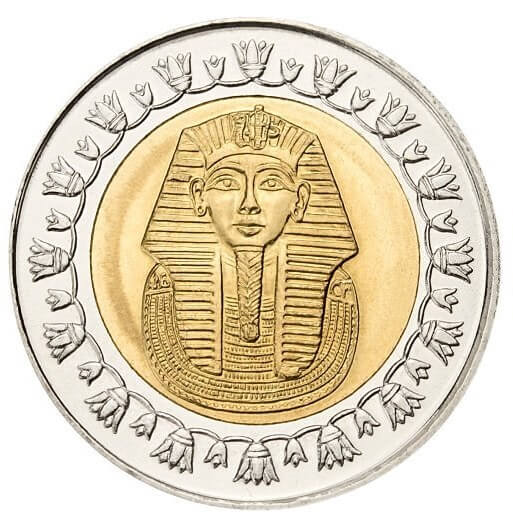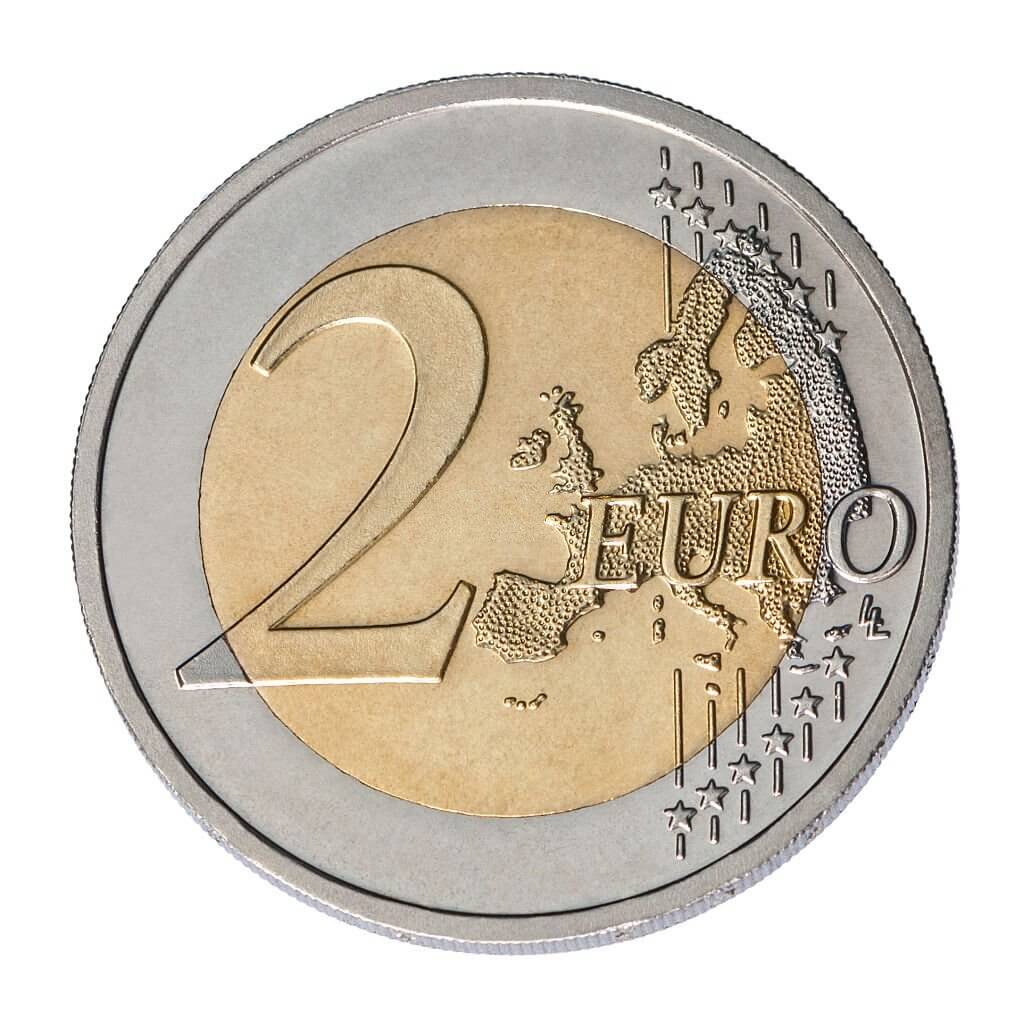We’re so used to our American pennies, nickels, dimes, and quarters that currency from other countries can seem so mesmerizing that they leave us completely stunned. Even our more rare dollar coins can’t compare to some of these other coins that are in circulation throughout the globe. Here are some of the most beautiful coins around the world!
1. The Egyptian Pound
The current Egyptian pound that is now in circulation is equal to 100 piastres which can be found at around $5 to $7 each. This most recent series began production in 2005 by the Central Bank of Egypt and has a gorgeous bi-metal composition. It looks like a combination of gold and silver at first glance, but it’s actually a clever mix of copper, nickel, and zinc. The outer ring has a silver appearance that is made up of copper and nickel and features connected flowers along the border. The center of the coin imitates gold by utilizing copper, nickel, and zinc as a dazzling background for the image of Pharaoh Tutankhamun’s burial mask. The text printed onto the coin is a wonderful collaboration between Arabic and English writing.
Pharaoh Tutankhamun, more commonly recognized as King Tut, was a prominent figure in Egyptian history making his image an excellent choice to be used for regular currency. He is known as the final ruler of Egypt by the end of the 18th Dynasty. Whenever you see a depiction of a mummy’s tomb, this is most likely the one you’ve seen the most.
2. Euro Coin
The 2 Euro coin is another gorgeous bi-metallic coin currently in circulation. It was first introduced in 2002 and is now the coin with the highest value in the continent. The outer ring consists of copper-nickel while the center is made up of nickel-brass. This composition gives it a silver and gold appearance similar to the Egyptian pound. Every coin features a large, prominent “2” next to a portion of the continent. The part of the map that is shown is indented which gives it a satisfying feel than if it were to be printed flat. The reverse side, however, is a bit more complex yet intriguing.
Such as with many American quarters, the backside of the 2 Euro coin can represent one of 22 different countries which are home to nationalities such as:
- Andorran
- Austrian
- Belgian
- Cypriot
- Dutch
- Estonian
- Finnish
- French
- German
- Greek
- Irish
- Italian
- Latvian
- Lithuanian
- Luxembourgish
- Maltese
- Monegasque
- Portuguese
- Sammarinese
- Slovak
- Slovenian
- Spanish
- Vatican


3. Canada 2 Dollar Coin
Our neighbor upstairs has much to be jealous of when it comes to the look of their currency. The Canadian 2 dollar coin also comes in a beautiful bi-metallic composition that’s truly something to behold. In 1996, Diane Marleau (the Minister of Public Works at the time) was responsible for producing the Canada 2 dollar coin, also referred to as the “toonie”, as we know it today. It is currently the highest-valued coin in the country’s circulation as it replaced the previous paper bill of the same worth. The outer ring is made of steel with nickel plating while the center is aluminum bronze with brass plating. This design is enhanced with multi-ply plated steel technology which produces an electromagnetic signature that’s difficult to counterfeit than regular alloy coins. The composition is also meant to last up to as long as 20 years!
As far as what’s printed on the Canada 2 dollar coin, you’ll find Queen Elizabeth II proudly featured on the obverse side with an image of a polar bear (drawn by Canadian artist Brent Townsend) on the reverse side. The 2 dollar coin is the only Canadian coin to have a different typeface than the other coins in circulation.
4. 500 Japanese Yen
The simple yet beautiful 500 Japanese yen coin was created in 1982 in response to the rising demand of vending machine usage. As with much of Japanese culture, the images chosen for this coin are symbols of good luck. The obverse features a paulownia (a species of hardwood tree) crest with the reverse showing bamboo and tachibana (mandarin orange) leaves. These symbols were actually transferred over from the original 500 yen paper note of the same value.
Until 1999, the coin was a simple mixture of 75% copper and 25% nickel. After that, the coin was redesigned with a combination of copper, nickel, and zinc. As recently as 2021, the 500 yen coin was redesigned yet again as a bi-metallic coin. Interestingly enough, the current variation of the coin uses the same metals with close to the same ratio of each. However, a three-layer structure is now used to classify it as bi-metallic. The difference between the outer ring and center isn’t as prominent as the coins mentioned earlier, but it is still pleasing to the eye nonetheless.
5. New Zealand One Dollar Coin
Lastly, New Zealand’s one dollar coin was introduced in 1991 in order to replace the dollar note at the time. Although it is the only coin on this list to be void of a bi-metallic version, it is still a stunning coin that you can’t help but admire. Such as with Canada’s 2 dollar coin, the obverse of the New Zealand one dollar coin features an image of Queen Elizabeth II in all of her glory. The reverse side showcases the country’s national bird, the beloved kiwi. The kiwi is surrounded by silver fern fronds which gives it an elegant look that’s satisfying among the coin’s copper tint. The New Zealand one dollar coin is made up of 92% copper, 6% aluminum, and 2% nickel for a gorgeous golden color.
Exchange International Coins at Covina Coin!
If any of these beautiful coins from around the world stand out to you, see if we have any for sale at Covina Coin! We’re the best coin dealer in the area when it comes to foreign currency so we’re guaranteed to have a coin that you’ll love to have for your own collection. Give us a call at 626-915-0033 to ask about our wares.
